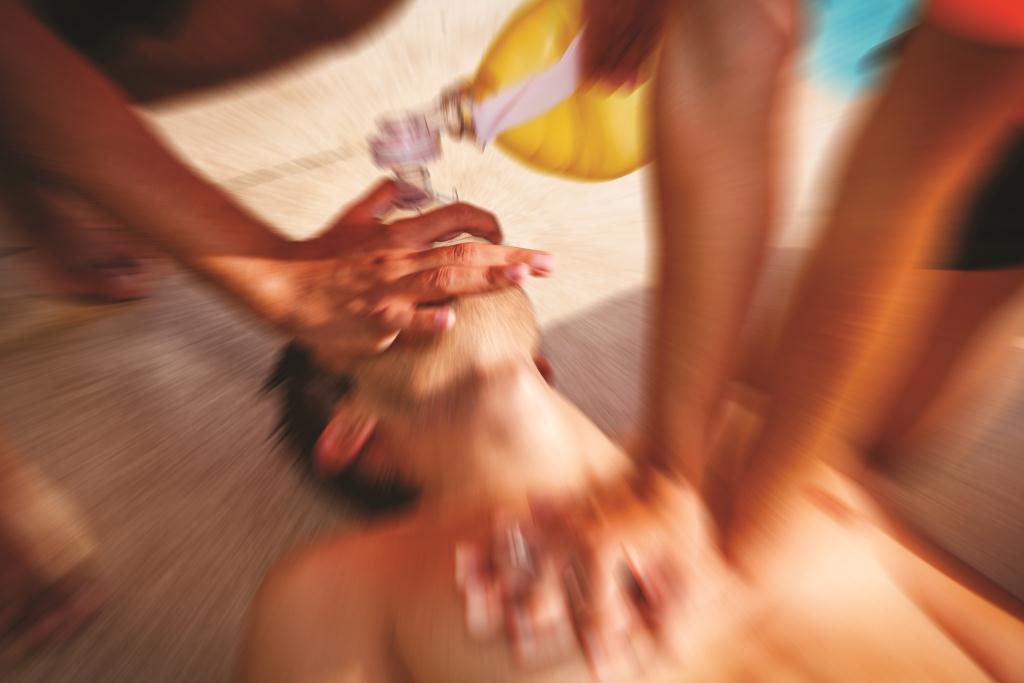My uncle died after drowning in the bathtub during one of his epileptic fits. Four high school students were crossing a river in a canoe on their way to school at the beginning of the year. The canoe tipped over and the children fell out. An elderly man nearby managed to save one, but the other three drowned. A day before, Mufaro Matemba, an 8-year-old boy, disappeared during their school break-time. The teachers searched the school desperately, but it was only much later when someone finally inspected the swimming pool when they realized what happened. On the edge of the pool was his little pile of clothes as his body lay motionless in the water. These are different stories with the same tragic outcomes. All could have been prevented.

In 2014, the World Health Organization created the first-ever Global Report on Drowning dedicated exclusively to drowning. The statistics will shock you:
- 372,000 people die from drowning every year
- there are approximately 42 drowning deaths every hour
- the drowning death toll is almost two thirds that of malnutrition and well over half that of malaria
- Drowning is one of the 10 leading causes of death for people between the ages of one and 24 in every region of the world
- Globally, over half of all drowning deaths are among those under the age of 25
- Males are twice as likely to drown as females
- Drowning rates in low- and middle-income countries are over three times higher than in high-income countries
- Alcohol use around water is an important risk factor for drowning in many countries, especially for adolescents and adults
According to the World Health Organization, the main risk factors are: the lack of physical barriers between people and water, a lack of (or inadequate) supervision of children, unprotected water crossings, lack of water-safety awareness and therefore risky behavior around water, overcrowding on water transportation and poor maintenance of vessels, and flood disasters.
These statistics are concerning, even more so because these numbers are only based on reported cases. In Zimbabwe, the drowning rates have increased year on year between 2010 and 2013. We set up the Kirsty Coventry Academy to address this drowning issue. With the support of the Princess Charlene of Monaco Foundation, we were able to provide swimming lessons to over 350 children in 2015 and more than 400 received water-safety instruction. Drowning prevention needs to involve all stakeholders, including government, schools, clinics, police, NGOs and the general public. The World Health Organization lists 10 actions we can take to prevent drowning:
Loading...
- Install barriers controlling access to water
- Provide safe places away from water for pre-school children, with capable childcare
- Teach school age children basic swimming, water safety and safe rescue skills
- Train bystanders in safe rescue and resuscitation
- Strengthen public awareness and highlight vulnerability of children
- Set and enforce safe boating, shipping and ferry regulations
- Build resilience and manage flood risks and other hazards locally and nationally
- Coordinate drowning prevention efforts with those of other sectors and agendas
- Develop a national water safety plan
- Address priority research questions with well-designed studies
When my husband was two-years-old, he nearly drowned in a swimming pool at his home. His father was standing nearby talking to a friend while the rest of the family were playing in the garden. He slipped into the water without a sound and without anybody seeing. It was only when he was unconscious that his father saw him and pulled him out. Thankfully, his father knew CPR and Tyrone was resuscitated. Too many victims of drowning are not so lucky.
“Swimming is the only sport that can save a life,” says Prince William in a video about school swimming in Britain.
The Kirsty Coventry Academy will save lives, empower individuals and uplift communities through water-safety and drowning prevention programs, as well as other current health and education issues.
Loading...
